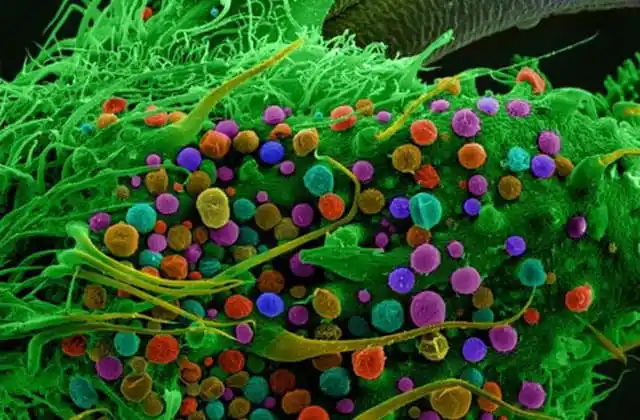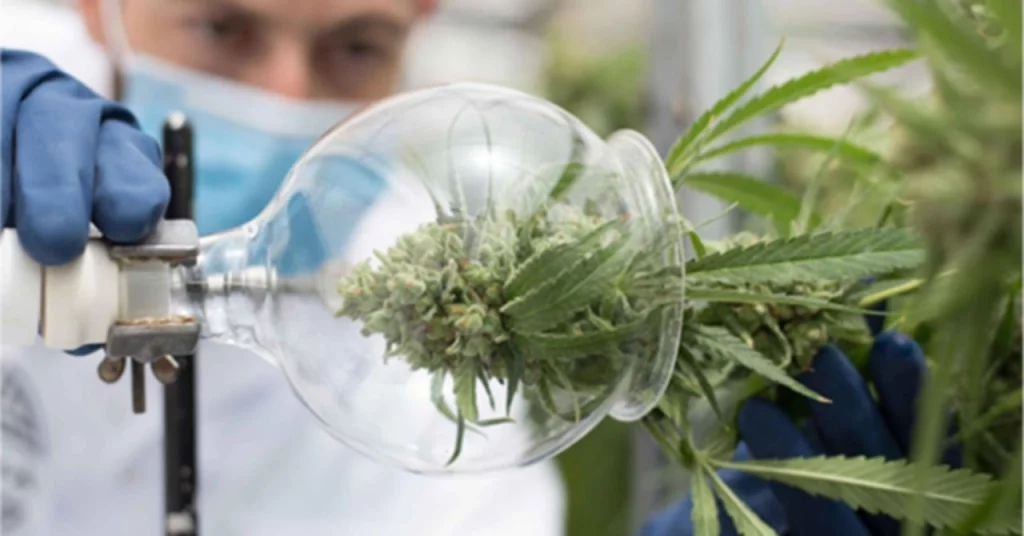English
The unique musky, pungent and sharp aroma of cannabis is unmistakable: most people smell it before they see it. Cannabis terpenes, the aromatic compounds that define the scent of many flowers and herbs, give marijuana its distinctive smell and contribute to its flavour.
Cannabis contains more than 150 types of terpenes. Although most terpenes are present only in trace amounts, the most important ones combine to create the characteristic aroma profile of different cannabis varieties.
As well as providing cannabis with a unique bouquet of aromas, terpenes also have a variety of functions within the plant and can induce a range of therapeutic and mood-altering effects in cannabis consumers.
Cannabis terpenes and their origin

Terpenes are naturally occurring compounds found in the trichomes of female cannabis plants. Trichomes are sticky, translucent glands that cover the surface of the buds and, to a much lesser extent, the leaves and stems. Crucially, trichomes contain resinous glands that produce terpenes.
Terpenes play an integral role in the growth and survival of the cannabis plant. As well as producing the characteristic aroma, these organic compounds also enrich the colour and pigmentation of the leaves and buds and contribute to the taste of the cannabis plant. In short, terpenes help to increase the plant’s attractiveness to some creatures while deterring others that may cause harm.
Some terpenes, such as geraniol, repel insects or herbivores that might try to nibble on cannabis. Other terpenes, such as terpinolene and linalool, attract insects and other small creatures that may help spread the pollen. These aromatic compounds support the plant’s immune system by relaying information about the surrounding environment, protecting plants from stressors and pathogens and helping to trigger immune responses.
A number of variables can affect the amount of terpenes that a cannabis plant produces. Factors such as whether the plant is grown outdoors or indoors, exposure to light, temperature, certain growing media, nutrient levels and harvest time can affect terpene levels.
Many terpenes are volatile compounds, which means they are easily lost in standard cannabis extraction processes. However, growing awareness of the therapeutic value of terpenes is leading to more sensitive extraction methods such as live resin.
Live resin is made from freshly frozen cannabis plants and maintains freezing temperatures throughout the extraction process to protect the terpenes and other volatile compounds in the plant, resulting in a more aromatic and flavourfully complex cannabis experience.
How do terpenes affect the body?
Awareness of the aromatic properties of terpenes is not new. People have long used the vibrant aromas associated with terpenes to formulate essential oils for practices such as aromatherapy.

For example, anyone who has dabbed lavender oil – which contains linalool – behind their ears knows that it can potentially help you relax. Similarly, the terpenes in some cannabis strains can enhance its effects.
But the effects of terpenes seem to go beyond feel-good and stress relief. Terpenes have also been identified as a new frontier in cannabis medicine. Until recently, attention has focused almost exclusively on the medicinal properties of cannabinoids such as THC and CBD, but as our knowledge of terpenes deepens, it is becoming clear that these aromatic compounds are a healing force as well.
All terpenes boast unique combinations of medicinal properties. Not surprisingly, some of the effects of terpenes on humans resemble their function in cannabis and other plants – for example, helping to fight unwanted microbes and pathogens.
Medicinal effects of cannabis terpenes
Preclinical animal studies and in vitro studies in test tubes have identified a number of therapeutic effects associated with terpenes. However, it should be noted that research on terpenes is in its infancy and has not yet been carried out on humans. Further research needs to be carried out to consolidate our knowledge of these compounds.
Antivirals
Researchers are still searching for new antiviral compounds. Many terpenes could show strong abilities to help kill viruses, including alpha- and beta-pinene, caryophyllene, camphor and carvone.
Anticancer effects
The increasing incidence of many forms of cancer has led to a search for compounds to help suppress it. Certain terpenes, including those found in cannabis, may have anticancer activity, helping to suppress the activity or growth of cancer cells.
Limonene could be a particularly important anti-cancer and anti-cancer agent, along with other terpenes such as pinene, camphor, terpinene and beta-myrcene. One potential unique advantage of terpenes is that they are unlikely to affect healthy cells and cause side effects – which is important for cancer treatment.
Antidepressants
Twenty-five percent of antidepressants are prepared using plant extracts that contain terpenes. Linalool and beta-pinene are common among the many plant extracts used in antidepressants.
Antimicrobial
A large number of terpenes can exhibit antimicrobial activity, or the ability to stop a harmful microorganism from doing its business. Terpenes that may assist in killing or stopping the progress of microorganisms include alpha-bisabolol, geraniol, menthol, eucalyptol, and terpinolene.
Pain relief
Scientists have found that some terpenes from cannabis can mimic cannabinoids by producing a pain-relieving effect. In one 2021 study that combined terpenes with cannabinoids, the pain-relieving effects were amplified without increasing negative side effects. This interaction could suggest an entourage effect (more below).
Terpenes that may promote pain-relieving activity include humulene, geraniol, linalool and β-pinene. Fascinatingly, the above study also found that these terpenes activate the body’s CB1 receptors, which are part of the endocannabinoid system and influence pain perception.
How can terpenes contribute to the effects of cannabis?

New evidence suggests that all the plant compounds in cannabis act synergistically – this is known as the entourage effect and can be thought of as: The total of all the compounds present in cannabis is more than the sum of their parts. In other words, a special synergy of the whole plant occurs when cannabinoids and terpenes are consumed together, as opposed to when they are consumed alone.
For example, terpenes appear to play a role in influencing the effects of THC and CBD in the body. In a 2018 review of people with epilepsy, those who took a full-spectrum CBD extract – including cannabinoids and terpenes – experienced improved symptoms and fewer side effects than those who took a CBD isolate containing only cannabinoids. Full-spectrum hemp extract is a whole-plant medicine that contains cannabinoids, terpenes and other compounds that are present in the plant.
So we should have basic information about terpenes. If you are interested in terpenes of our varieties, you can try them this season.
Published by Jan Veselý
10/03/2023choose and buy cannabis seeds from our offer
our pleasure
























